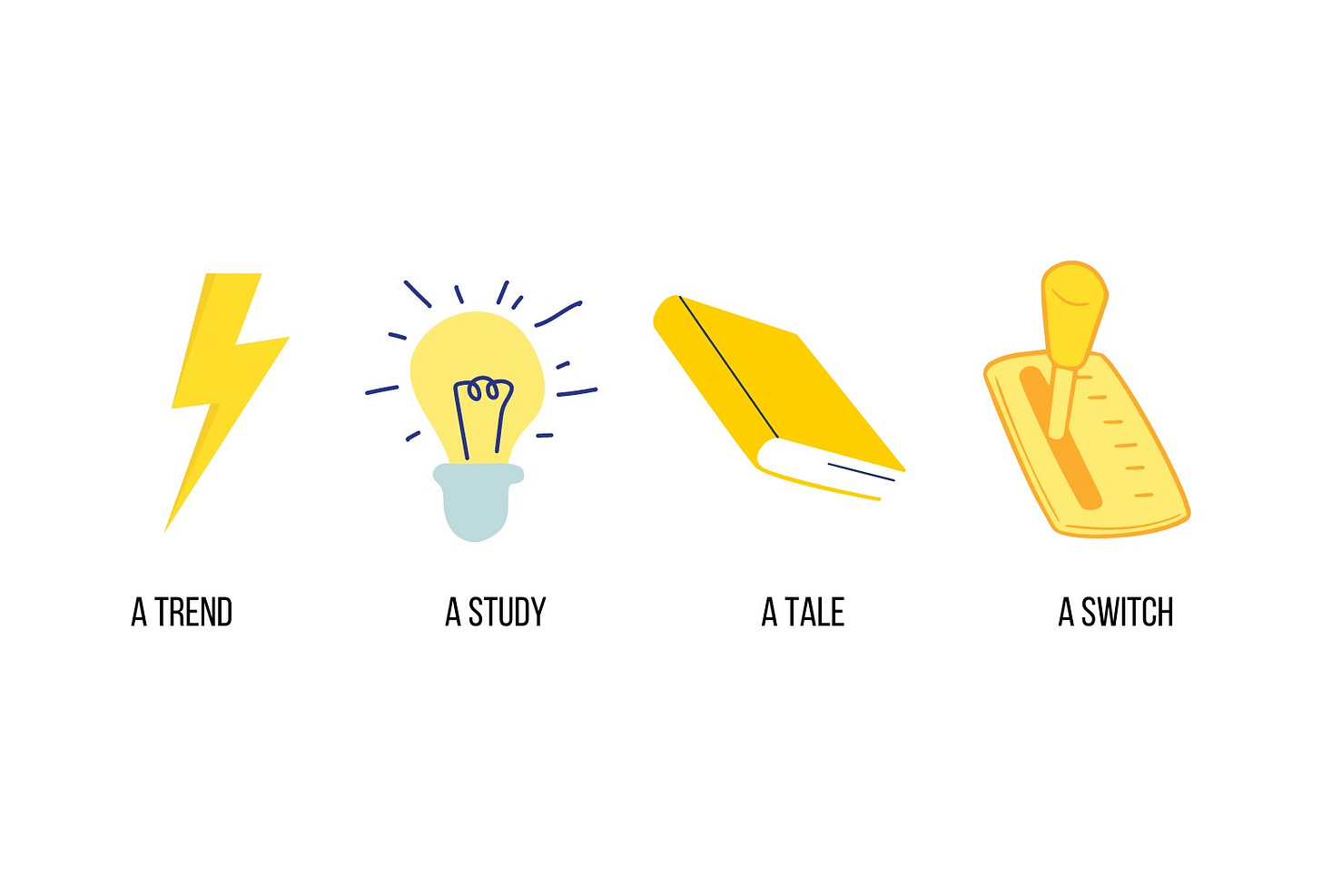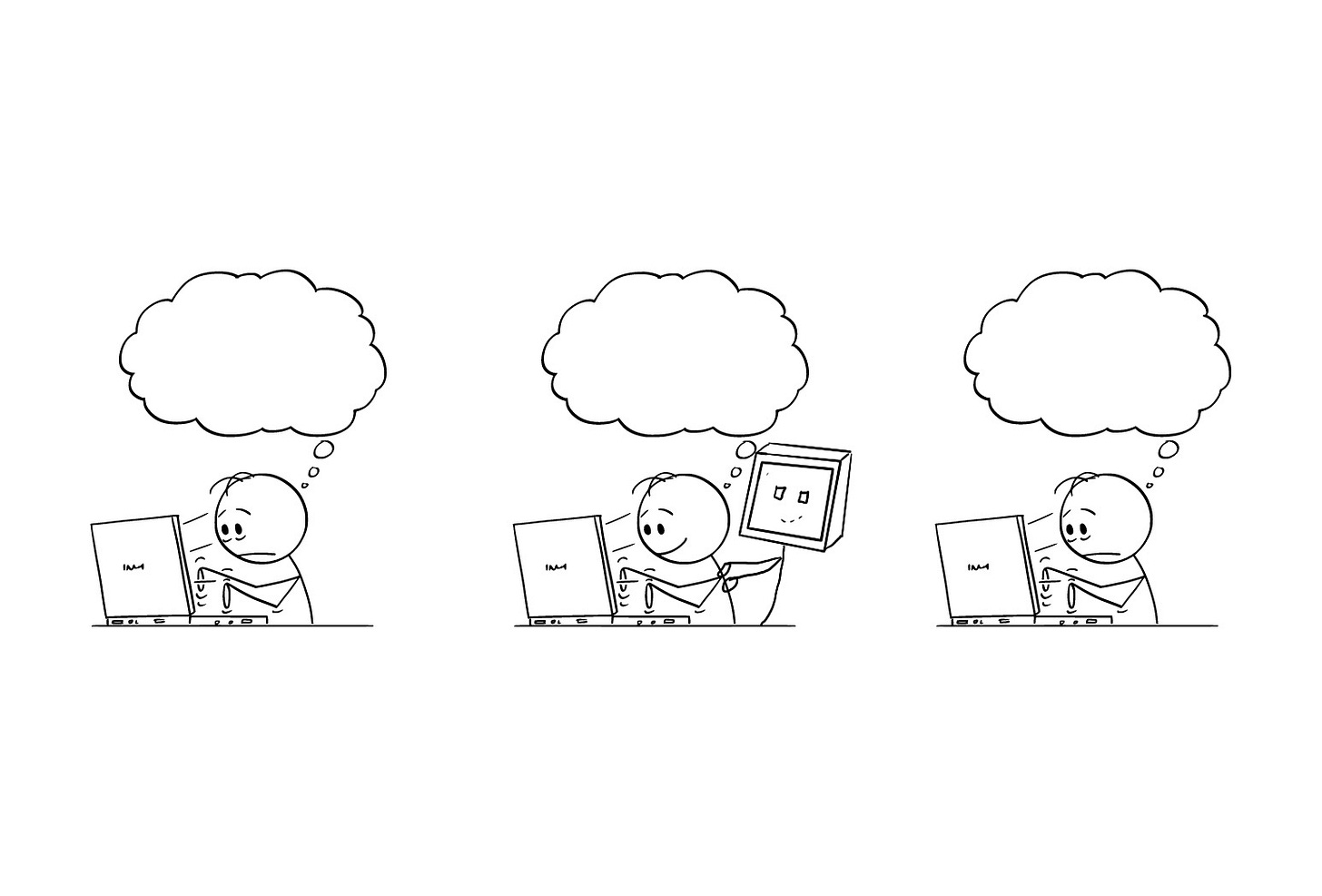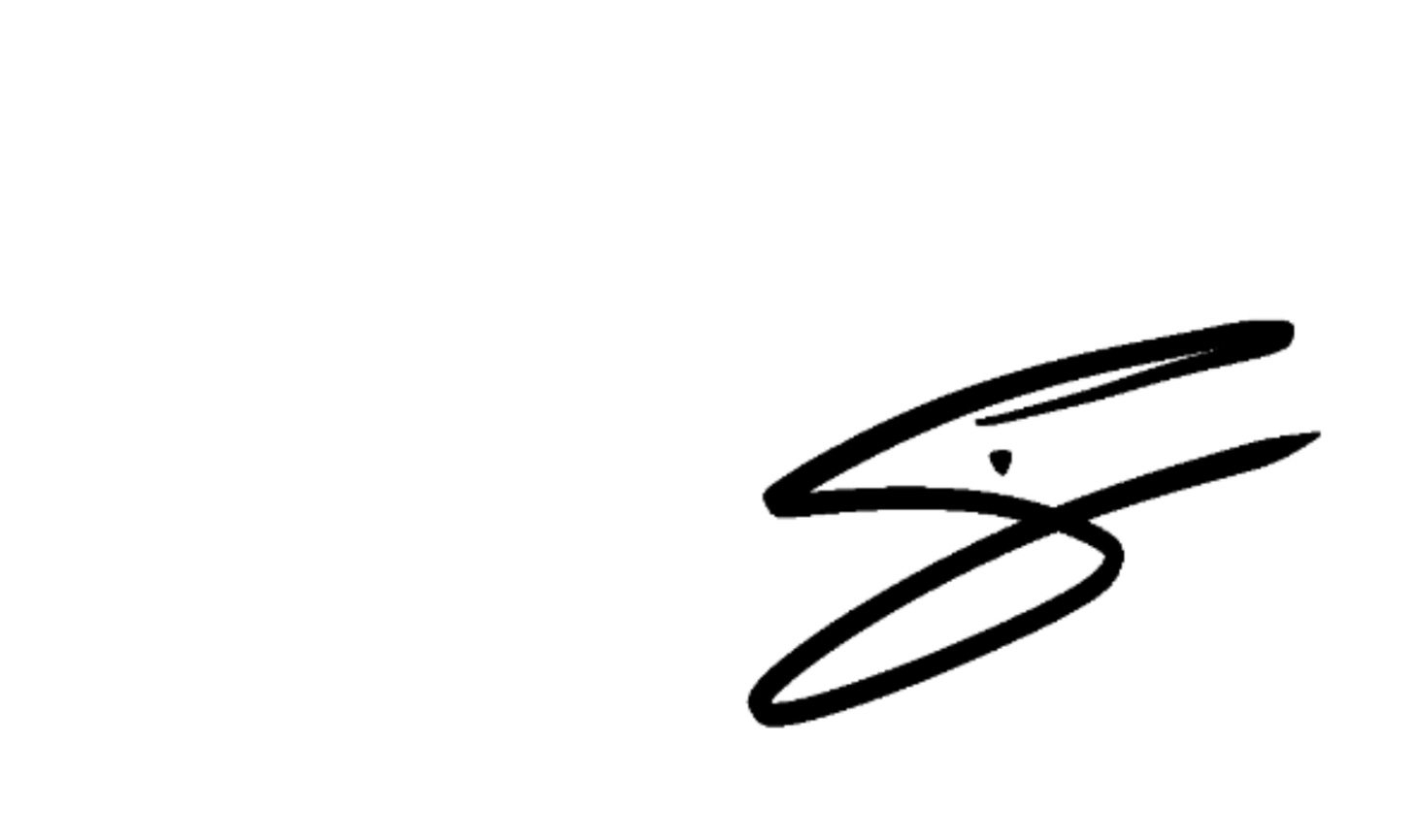Are you using AI secretly at work?
Here's why you should tell more coworkers and managers that you're practicing "co-intelligence" with large language networks.
Before we get started
You probably read about 250 words a minute, which means that this newsletter’s 1000-word-plus posts take you about 5-7 minutes to read. And thanks for that!
But then, the truly challenging part begins: putting each week’s mode/switch into practice to help make your company culture more humane for yourself and for others.
With that in mind, I’m experimenting with a shorter format for the newsletter, sharing just four elements: a Trend, a Study, a Tale, and a Switch.
These elements will help you convert the pressures of your workplace into something livable and workable. I’m just doing a mode switch to a more skimmable take.
Let me know what you think. Do you miss the thousand-word format? Or do you give an “amen” to the packed brevity below? Reply to this email or jot a comment below.
(Against all internet wisdom, I do read comments.)
A Trend
Workers these days admit confidentially to using AI to get stuff done at work. According to a study released by Microsoft, more than half of these AI users don’t like to tell others about their secret collaborator. Gen Z workers far outstrip other employees in AI—as much as 85% of rising professionals doing what Microsoft calls BYOAI, that is, using their own accounts with platforms like Co-Pilot to get stuff done. But even Boomers are joining the trend (at 73%).
A Study
Everybody’s concerned that AI will take away jobs. Even Professor Ethan Mollick (of the Wharton School) writes in his recent book Co-Intelligence that “your job is likely to overlap with AI in the future. But, he adds, “That doesn’t mean your job will be replaced,” especially if company leaders get ahead of this question: “What is your vision about how AI makes work better rather than worse?” Apropos to the Mode/Switch, AI makes workplace culture more, not less important: “organizations with high degrees of trust and good cultures will have an advantage,” he writes, not least because employees in those work cultures will be able to grok boldly and better.
A Tale
When I was a kid, my parents took me and the sibs to Frankfurt Pier every summer. I remember the giddy fear I felt, standing with my back to the lighthouse, watching a wave surface at the edge of the pier. If a grave could open and roll and move towards you, that’s what it would look like.
Other pier people were crazy: they flipped backwards into the blue-black depths.
When I think about AI, I think about that wave rising, cresting, spreading at the pier’s edge. I don’t want to be the crazies doing back-flips. But I might like to be like the fisherman who always seemed to be perching on the narrow pylon at the brink of the pier. The waves that gave me the willies brought him the fish.
A Switch
I’m a university professor, which means that I’m in a dangerous position in regards to large language networks. (Mollick writes that academic faculty “make up most of the top 20 jobs that overlap with AI.”) But look, it’s not going to make your job, or mine, safer if we keep quiet about how we’re using AI. Nor will it help to avoid it altogether. Let’s make the mode/switch to normalizing the thoughtful use of AI. I’m not talking about the copy-and-pasting that anybody can do. We need to stop treating this technology like a vending machine we hope nobody notices we’re using—and more like a strange but provocative voice in the conversations our companies host.
The Book’s Arrived
The story about Frankfurt Pier above is adapted from my new book about digital overwhelm in workplace culture, which I hope you’ll order now from the publisher or on Amazon.
Here’s what the book offers you. During the Great Resignation, I spent a lot of time listening to Gen Z and Millennial professionals who told me how how rapid technological development has inundated work today. This organizational research helped me build a framework for coping with how flooded you feel at work and after.
LWYW
As you’re experimenting with AI today at work, listen to this playlist. It’ll help you drag the future into your task. (Thanks, Hannah, for the tunes.)






